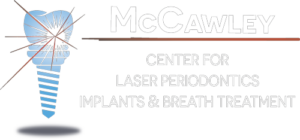
By age 44, nearly 70% of American adults have lost at least one tooth due to trauma, decay, or periodontal disease. An estimated 178 million people in the U.S. are missing at least one tooth, a statistic expected to continue growing over the next 20 years due to the growth of periodontal disease.
A single missing tooth can trigger a domino effect, causing additional tooth loss as well as a range of other issues. Your teeth work together as a unit, so losing even one puts additional strain on the others. The subsequent wear and tear may cause remaining teeth to fracture, drift, tilt, or break. Unbeknownst to the patient, the adjacent teeth may also begin to shift into the empty spaces left from the missing tooth. The misalignment reduces long-term stability and increases your vulnerability to decay and periodontal disease.
One lost tooth might not affect your chewing, but multiple missing teeth certainly will. Besides being unable to enjoy your favorite foods, impaired chewing can limit your diet and compromise your nutrition. As a result, you may experience constipation, weight loss, indigestion, constipation, and rheumatism.
When you lose a tooth, the underlying bone collapses. Since a significant amount of the overall bone loss occurs within the first year, postponing replacement can cause substantial long-term damage. Replacing your teeth with dental implants can help prevent bones loss because the implants actually stimulate growth like natural teeth.
Since most chewing occurs in the back teeth, they eventually wear down as we age. However, the additional strain caused by missing teeth can expedite this process and cause the vertical height of your face to collapse. When vertical collapse occurs, the chin shifts up towards the nose and the lips form a down-turned crease in the corners of your mouth, resulting in a perpetual frown.
Since most chewing occurs in the back teeth, they eventually wear down as we age. However, the additional strain caused by missing teeth can expedite this process and cause the vertical height of your face to collapse. When vertical collapse occurs, the chin shifts up towards the nose and the lips form a down-turned crease in the corners of your mouth, resulting in a perpetual frown.
There are many disadvantages of choosing a fixed or partial denture over dental implants, including:
I don’t think I could ever put into words how THANKFUL I am for all you, Dr. Thomas McCawley, Dr. Mark McCawley and your incredible team, have done for me.
I was so fortunate to have such a dedicated team of professionals there for my well being during the year and a half process, that without question has restored my life back to a healthy and happy one full of endless smiles!
Next time I am in town, I will stop by to say “Hi.”
